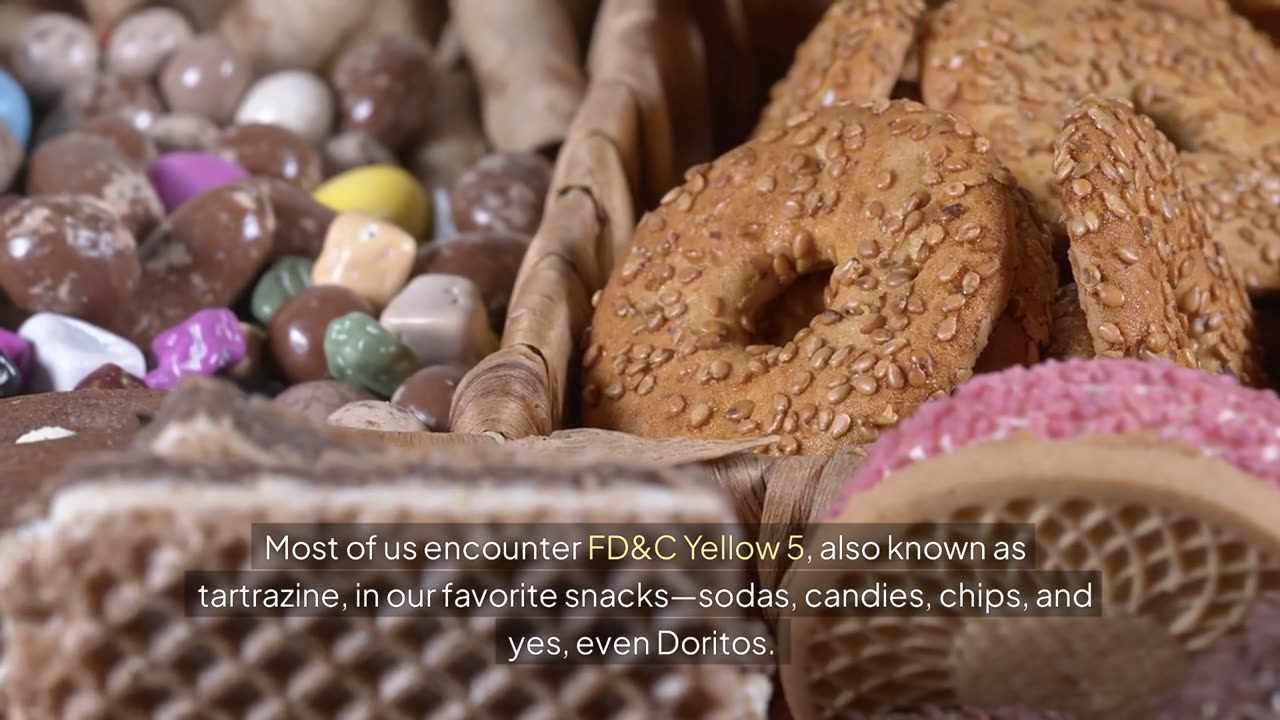Premium Only Content

The Future of Transparency: How a Common Doritos Ingredient Could Revolutionize Medicine**
Imagine a world where doctors can diagnose diseases without invasive procedures, where finding a vein for a blood draw is a breeze, and where tattoos can be removed with pinpoint accuracy. This futuristic vision might be closer than we think, thanks to an unexpected discovery. Researchers at Stanford University recently found that a common food dye—one that you might have consumed in Doritos—can turn mouse skin temporarily transparent. This breakthrough could open up a world of possibilities for medical applications. But what does this mean for the future of healthcare, and how soon could we see these innovations in practice?
**Section 1: From Snack Aisles to Science Labs**
### The Unlikely Hero: FD&C Yellow 5
Most of us encounter FD&C Yellow 5, also known as tartrazine, in our favorite snacks—sodas, candies, chips, and yes, even Doritos. But who would have thought that this common food dye could become a game-changer in the medical field? When researchers at Stanford University applied this dye to the skin of a sedated mouse, they discovered something astonishing: the dye made the mouse’s skin transparent, allowing its internal organs to be seen with the naked eye. This result was so unexpected that it even surprised the scientists conducting the experiment.
This breakthrough challenges our basic understanding of how dyes work. Typically, dyes make materials more opaque, not less. But when FD&C Yellow 5 was applied to the mouse’s skin, it had the opposite effect—at least in the red part of the light spectrum. This groundbreaking finding opens up a world of possibilities, from better medical diagnostics to more efficient cosmetic procedures.
**Section 2: The Science Behind the Transparency**
### How It Works: The Magic of Light and Dye
So, how does a simple food dye make skin transparent? The answer lies in the interaction between the dye molecules and light. Normally, when you add a dye to a substance, it absorbs light, making the substance appear darker or more opaque. However, in this case, when the dye was dissolved in the mouse’s skin or muscle tissue, it actually allowed more light to pass through, but only in the red part of the light spectrum.
This phenomenon is not just a scientific curiosity; it has practical implications. By making the skin temporarily transparent, doctors could potentially peer into a patient’s body without the need for invasive procedures. Imagine being able to examine internal organs, detect tumors, or locate veins for blood draws—all without making a single incision. While this research is still in its early stages, the potential applications are nothing short of revolutionary.
**Section 3: Medical Marvels on the Horizon**
### Beyond Biopsies: The Future of Non-Invasive Diagnostics
One of the most exciting possibilities of this discovery is its potential to transform how we diagnose diseases. Currently, diagnosing certain conditions often requires invasive procedures like biopsies, which can be painful, risky, and expensive. But what if doctors could diagnose deep-seated tumors or other medical conditions simply by looking at the skin—without cutting into it?
This new technique could make that a reality. By applying a safe and tested version of FD&C Yellow 5 to human skin, doctors might one day be able to see inside the body with unprecedented clarity. This could lead to earlier diagnoses, less invasive treatments, and better outcomes for patients. While more research is needed to confirm its safety and efficacy in humans, the potential benefits are enormous.
**Section 4: Cosmetic and Practical Applications**
### Beauty and Beyond: The Cosmetic Potential
The medical field isn’t the only area that could benefit from this discovery. The cosmetic industry could also see a revolution. Imagine getting a tattoo removed with laser precision, thanks to the transparent skin technique. By allowing practitioners to target pigment more accurately, this method could make procedures like tattoo removal more effective and less painful.
But the applications don’t stop there. This technology could also be used to enhance beauty treatments, making them more precise and efficient. Whether it’s removing unwanted pigmentation or improving the accuracy of cosmetic surgeries, the potential for innovation is vast. And while it’s too early to say exactly how this technology will be used, the possibilities are tantalizing.
**Section 5: The Road Ahead: Challenges and Ethical Considerations**
### Caution Ahead: The Need for Safety and Ethical Research
As exciting as this discovery is, it’s important to approach it with caution. FD&C Yellow 5 may be safe for consumption in small amounts, but applying it to human skin is a different story. Human skin is much thicker than mouse skin, and the outer layer of our epidermis acts as a barrier that prevents substances from penetrating too deeply. Before this technique can be used on humans, researchers need to conduct thorough studies to ensure it’s safe and effective.
Moreover, there are ethical considerations to keep in mind. While the idea of transparent skin may seem futuristic and exciting, it also raises questions about privacy and consent. If this technology becomes widely available, how will it be regulated? Who will have access to it, and under what circumstances? These are questions that researchers, ethicists, and policymakers will need to address as the technology develops.
**Conclusion: A New Frontier in Medicine and Beyond**
The discovery that a common food dye can make mouse skin temporarily transparent is a groundbreaking development with the potential to revolutionize both medicine and cosmetics. While the research is still in its early stages, the possibilities are immense—from non-invasive diagnostics to enhanced beauty treatments. However, as we look to the future, it’s important to balance excitement with caution, ensuring that this technology is developed safely and ethically.
If you’re as fascinated by these scientific breakthroughs as we are, don’t forget to like, share, and subscribe to our channel. Your support helps us continue to bring you the latest in science and technology. And who knows—maybe one day, you’ll be seeing the world a little more clearly, thanks to a Doritos ingredient! Leave a comment below with your thoughts or any questions you have. We’d love to hear from you!
-
 LIVE
LIVE
BBQPenguin_
1 hour agoTasking & PVP
5 watching -
 LIVE
LIVE
FrizzleMcDizzle
3 hours agoGladius, Creature of the Night - NEW NIGHTLORD - NightReign
11 watching -
 8:31
8:31
MattMorseTV
1 day ago $1.48 earnedTexas just did the IMPOSSIBLE.
64.1K85 -

Rotella Games
18 hours agoGreen Hell Day 6 | We Have a LONG Way to Go
12.8K4 -
 41:26
41:26
The Mel K Show
5 hours agoMel K & Clay Clark | Financial Success Hides Behind Self Discipline: Five Pillars | 8-24-25
31.9K3 -
 LIVE
LIVE
The Rabble Wrangler
13 hours agoThe Best in the West Plays Battlefield 2042 | Road to BF6 Grind
34 watching -
 2:29:17
2:29:17
JTtheSG
2 hours agoLIVE Replay - Back To The Deadzone!!!
13.8K -
 LIVE
LIVE
The Official Steve Harvey
13 days ago $5.14 earned24 HOURS OF MOTIVATION w/ STEVE HARVEY
265 watching -
 25:56
25:56
DeVory Darkins
23 hours ago $0.86 earnedTrump drops ULTIMATE BOMB on Democrat Mayors as ICE makes SHOCKING Announcement
52K184 -
 3:36:30
3:36:30
TonYGaMinG
8 hours ago🟢 ABI WITH FRIENDS | 🍩JOE DONUTS | 😶 🌫 VLADSGAMINGCARTEL |
28.1K4